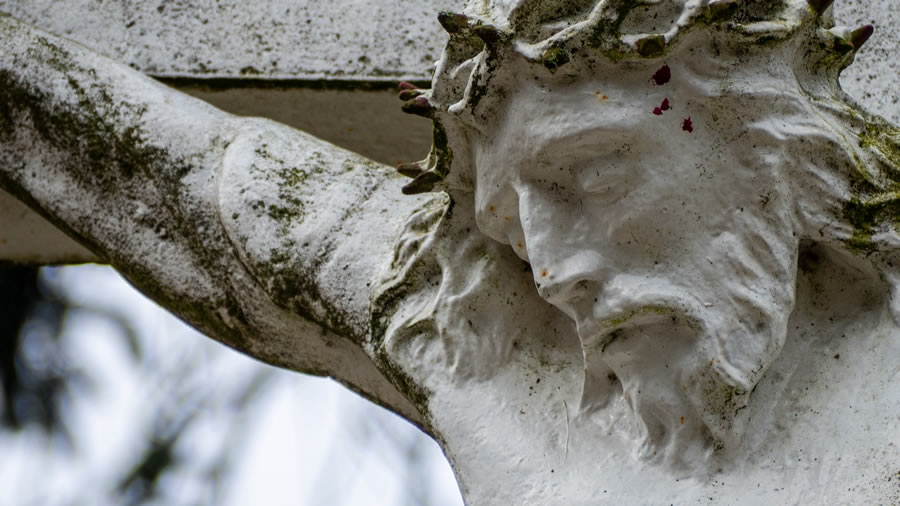
The Reproaches of Good Friday/The Warfare of the Church
03-28-2021Weekly ReflectionThe Reproaches are an important part of Good Friday because they highlight the essential injustice of the Crucifixion, the culpability of humanity in this action, and the role of sin in those times and our times in bringing this about. We are given remarkable gifts by God, and the signs are all around us, and yet often we do not show gratitude. Rather, we turn our backs on God and deny God due reverence in our lives and in our worship.
The narrative of the Reproaches is presented as a historical epic but it is impossible to hear them and not think of the universal moral and theological implications.
Cantor 1: Popule meus, quid feci tibi? Aut in quo contristavi te? Responde mihi. My people, what have I done to you? In what have I offended you? Answer me.
Cantor 2: Quia eduxi te de terra Ægypti: parasti Crucem Salvatori tuo. Because I led you out of the land of Egypt: you prepared a Cross for your Savior.
Choir A: Hagios o Theos. Holy is God
Choir B: Sanctus Deus.
Choir A: Hagios o Ischyros. Holy and Strong
Choir B: Sanctus Fortis.
Choir A: Hagios Athanatos, eleison hymas. Holy, immortal One have mercy onus
Choir B: Sanctus Immortalis, miserere nobis.
Besides the Kyrie, this is the only vestige of Greek in the Roman Rite. Thus the Improperia begin with this couplet that includes parts of the Trisagion (the three Holies). In the early centuries of the Church the liturgy was celebrated in Rome in Greek not Latin. Greek was, in the ancient world, the international language. Gradually the Roman liturgy began to be celebrated in Latin.
Cantors 3 & 4: Ego propter te flagellavi Ægyptum cum primogenitis suis: et tu me flagellatum tradidisti. I, on your behalf, scourged Egypt with its first-born: and you handed me over to be scourged
Choirs A & B: Popule meus, quid feci tibi? Aut in quo contristavi te? Responde mihi. My people, what have I done to you? In what have I offended you? Answer me
Cantors 1 & 2: Ego eduxi te de Ægypto, demerso Pharaone in mare rubrum: et tu me tradidisti principibus sacerdotum. I led you out of Egypt, plunging Pharoh into the Red Sea and you handed me over to the chief priests
Choirs A & B: Popule meus, quid feci tibi? Aut in quo contristavi te? Responde mihi. My people, what have I done to you? In what have I offended you? Answer me
The vexillum (plural vexilla) was a flag-like object used as a military standard by units in the Ancient Roman army. The vexillum of the Church is the Cross. Hence the Church sings this beautiful hymn in Passiontide:
Vexilla regis prodeunt:
Fulget crucis mysterium
Quo carne carnis conditor,
Suspensus est patibulo.
O Crux ave, spes unica,
Hoc passionis tempore
Auge piis justitiam,
Reisque dona veniam.
Te, summa Deus Trinitas,
Collaudet omnis spiritus:
Quos per crucis mysterium alvas,
rege per saecula. Amen.
The Royal Banner forward goes,
The mystic Cross refulgent glows:
Where He, in Flesh, flesh who made,
Upon the Tree of pain is laid.
O Cross! all hail! sole hope, abide
With us now in this Passion-tide:
New grace in pious hearts implant,
And pardon to the guilty grant.
Thee, mighty Trinity! One God!
Let every living creature laud;
Whom by the Cross Thou dost deliver,
O guide and govern now and ever! Amen